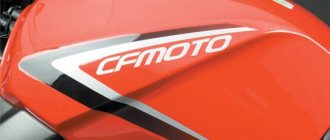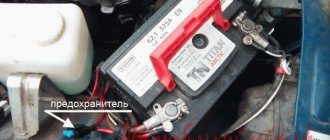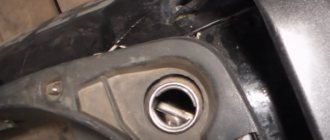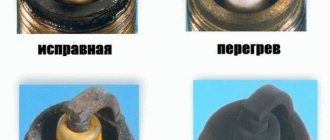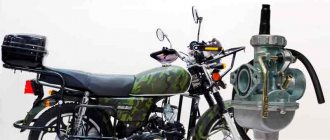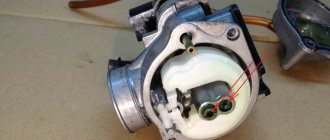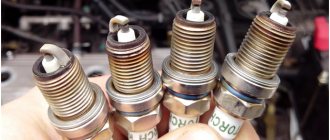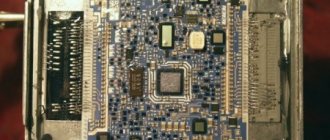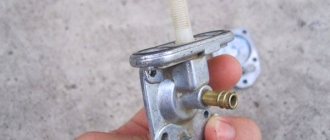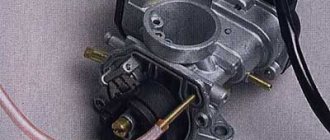A situation familiar to many when the engine does not start and fuel does not flow into the carburetor
. but we need to go urgently. In order to quickly correct the situation, it is necessary to have at least superficial knowledge of the functioning of the fuel system and, in general terms, know the list of main faults that create such a situation.
Fuel does not enter the carburetor for several reasons
.
- lack of pressure in the fuel supply system,
- the fuel pump has failed (quite a common problem),
- problems with the vacuum pipeline,
- dirt plug in the supply hose from the gas tank,
- production of a gas filter,
- other,
The engine may not start not only because there is no fuel supply to the carburetor, although this is the first thing that comes to mind. The engine does not respond to ignition due to:
- lack of current supply to the coil,
- no high voltage from the coil,
- high voltage does not reach the spark plugs,
- There is fuel in the carburetor, but it doesn’t reach the chambers,
- failure in the ignition system, etc.
Checking the fuel supply to the carburetor
The simplest, but far from effective way to determine whether fuel is supplied to the carburetor is to check it manually. To do this, the inlet fitting on the carburetor is released from the fuel supply hose. Press the lever for manual pumping of gasoline several times - if fuel comes out from the removed hose, then the problem is stuck in the carburetor; if it doesn’t work, you need to contact the fuel pump.
However, manual checking is not effective
. because, firstly, it depends on the position of the damper in the air filter, and secondly, there are often situations when in manual mode everything is fine, but we start the engine - there was no fuel in the carburetor, and there is no fuel.
Testing with a bottle in this regard is a more reliable method of testing gasoline supply. To do this check, tie a plastic bottle to the removed gasoline supply hose and start the engine. This verification method gives an unambiguous answer about the location of the fault.
Carburetor malfunction
The first to be inspected is the fine-mesh filter after the inlet fitting. It is designed to clean the fuel mixture before entering the float chamber. It closes with a plug that needs to be unscrewed, the filter mesh removed, washed and blown out, then put back in place and screwed on the cap.
There is no point in checking the jets, since if one were clogged, the engine would operate, albeit in a different mode.
The fuel pump, like the air filter, has a manual feed lever. The first check is carried out with its help.
Since the fuel line is already disconnected from the inlet fitting on the carburetor, it can also be disconnected from the fuel pump and purged as a preventive measure. A rag is placed under the outlet fitting of the fuel pump to prevent gasoline from splashing and spreading throughout the engine and engine compartment, and the manual feed lever is pumped several times.
The presence of gasoline at the outlet fitting of the fuel pump will indicate loosening of the pump mounts
. It is necessary to tighten the mounting bolts on the pump housing.
Lack of fuel supply again leaves two options for failure
. The first option is failure of the fuel pump, which is most likely, and the second is a clogged supply line from the gas tank to the pump, which is less likely and rarely occurs.
Check the operation of the pump in the same manual mode by covering the hole in the outlet fitting with your finger and pumping the lever. The pressure won't be strong, but it should be there. The absence of a characteristic sound of air escaping gives a definite answer about its failure.
Read also: DIY compressor with receiver
Based on the above, we can conclude that there are only two truly serious reasons for the fact that fuel does not flow into the carburetor - failure of the fuel pump and a breakdown in the carburetor itself. Other reasons, such as clogged lines or input and output filters, are less likely and less common.
Chainsaw won't start reason
I continue) As I said, it turned out that I began to compare this scooter with my own. This scooter, as I understand it, is called ABM. Well, I have a regular Honda Dio.
So I removed the carburetor. Well, first I cleaned it up a little. All literature (and not only) recommend cleaning the carburetor from the outside without disassembling it, so that nothing gets inside. I first disassembled it, and then began to clean the lid and body separately. Because I didn’t care) since I would have cleaned him entirely one way or another, because he had eaten dandelions. Well, I drained the gasoline from the float chamber, just for cleaning))) although it was not gasoline at all, as is already clear)
But the float contained a resin quite well known to many car enthusiasts:
If you look closely, you can see that she has blocked the canal. And here I want to explain in more detail. What is here and why. The thing is basically banal, but for some reason no one knows.
To begin with, you can see a tube in the lid. She just goes into this channel. And on the outside of the lid there is a fitting:
There is a fitting on all carburetors, but I only saw the tube on this one. There was no Japanese from my Honda. Apparently this carburetor is not Japanese) which I will say more about later) The Japanese apparently believe that a priori there cannot be fuel overflow in their carburetor) And the tube is just for this purpose - protection against overflow. If suddenly the needle stops holding, the fuel will calmly flow down the tube, through the fitting, and then along the hose to the ground. If it is not there, then fuel may pour into the cylinder (although this is a rather difficult path for it) and there is a risk of water hammer. Although, this scooter was not protected from this phenomenon. Since the drain hose was lowered down towards the wheel. And since the scooter is quite powerful, they really liked to ride it in the mud (as far as I could tell) and the hose was tightly clogged with it.
Now I think it’s clear with the tube. But if someone noticed (or maybe someone knows), then near the fitting there is a boss into which the needle is screwed. Which just opens the channel in the float chamber that was clogged with gasoline tar.
And, as you might guess, if you unscrew this needle, gasoline will flow from the float chamber through the fitting.
Some people think that this is necessary in order to drain gasoline from the float chamber) Yes, I think this purpose is also appropriate. But the primary task of this mechanism is quite banal: checking the fuel level)) Based on the principle of communicating vessels.
Okay, let's move on)) I cleaned the carburetor, checked everything and assembled it. This is a different story)
Therefore, I will continue comparing it with the Honda) And here’s an element that struck me a little again:
This is a gasoline filter) Inserted directly into the supply fitting:
Very unlike the Japanese, who wouldn’t do such a simple thing) For example, a Honda has a full-fledged paper one. Next, I didn’t like the paper gasket.
Read also: Tax on a 100 horsepower car
The Japanese use rubber, round ones. They are simply inserted into a groove in the lid and that's it. They hold up well, don’t tear when disassembling, and the rubber is good and doesn’t harden. So, even though Japan is written on the carburetor, it somehow seemed to me that it was not Japan)) Although, it is still made very well. And the casting is good. The Honda is of course of better quality, but still. I really didn’t like the float. Firstly, it’s plastic and can get gasoline inside (they know how to do this, but I don’t know how). Secondly, it is not adjustable. The level cannot be improved. On the Honda the float is solid (like on the Solex) and the level can be adjusted.
That's probably all the differences in the carburetor. There are pros and cons. As usual)
But what I really liked about this scooter, unlike the Honda, is the gas tank. Namely, that he is on top. And therefore, he does not need any pump. The fuel flows by gravity. There is only a vacuum fuel tap there. System for girls. So as not to block it with your hands, as on all normal Soviet motorcycles and mopeds.
I took the photo when I had already assembled everything, so it’s hard to see) But it’s clear that there are three hoses. One from the tank. It flows by gravity. One for the carburetor - in the float. And the third one goes to the collector (not entirely true, but without going into details). It opens the valve when the engine starts, and gasoline flows into the chamber by gravity. Well, I think it's clear.
In general, the whole scooter is so feminine) you don’t even have to press the brake to start it. There is a spark anyway)
Here. And on the Honda there is this damn pump, in which the balls are of such a diameter that there are none in any of the bearings. And with low pressure in the crank chamber, it will not pump at all. It’s good that you can cut the membrane out of a notebook cover. The Japanese are infectious)) they like to complicate everything)
This is probably where the differences end. At least that's what I thought. If these two scooters are crossed using a fuel system, you can get a very good copy. Although, in general, this ABM is already very good. Well, I liked it better than the Honda)
Finally, I would like to recommend draining gasoline from the tank, system and carburetor for the winter. Especially if the gasoline is of poor quality. It is very easy to drain, and you will have fewer problems in the summer. Or you won’t get it at all) if you “preserve” it correctly
